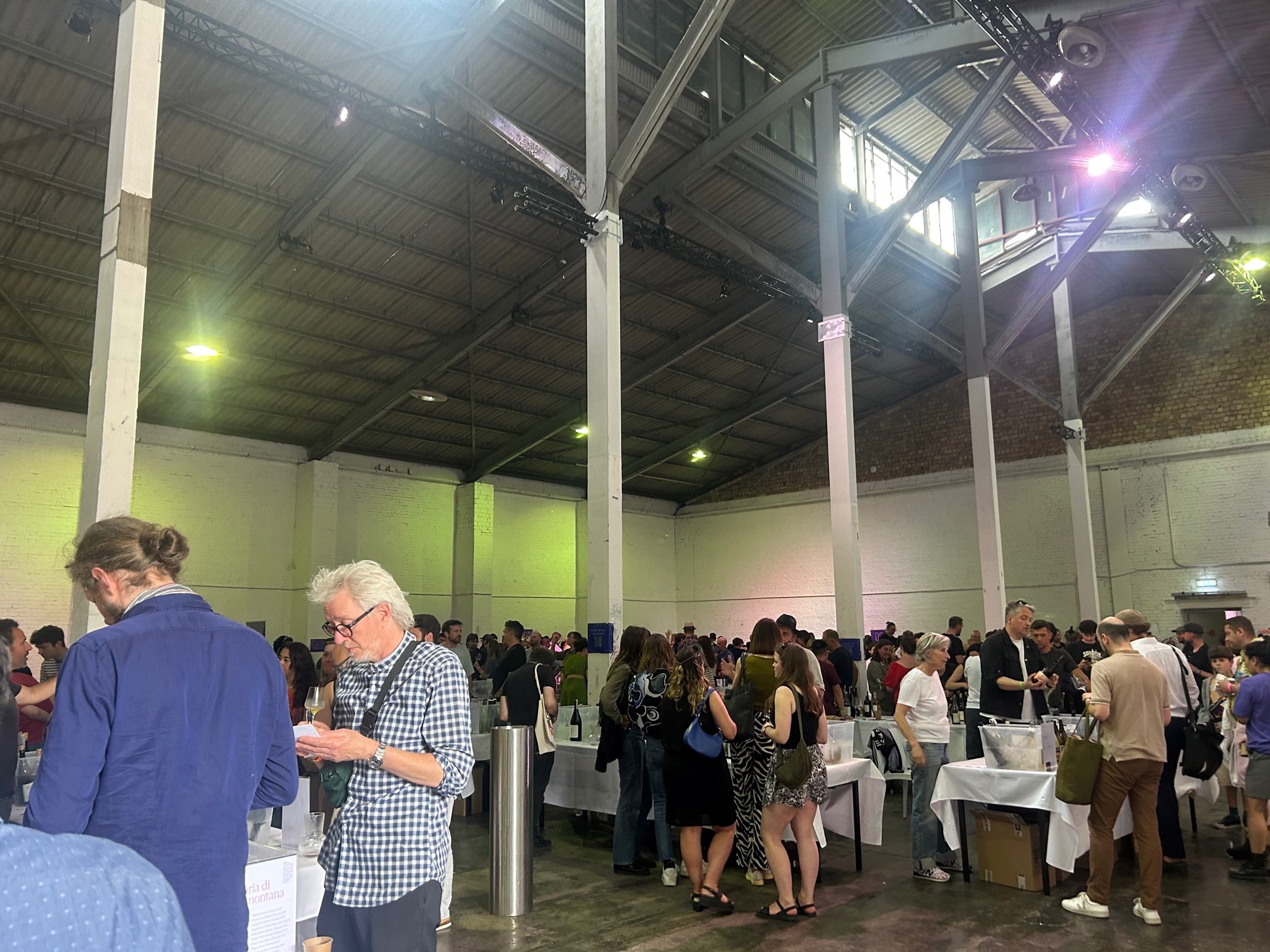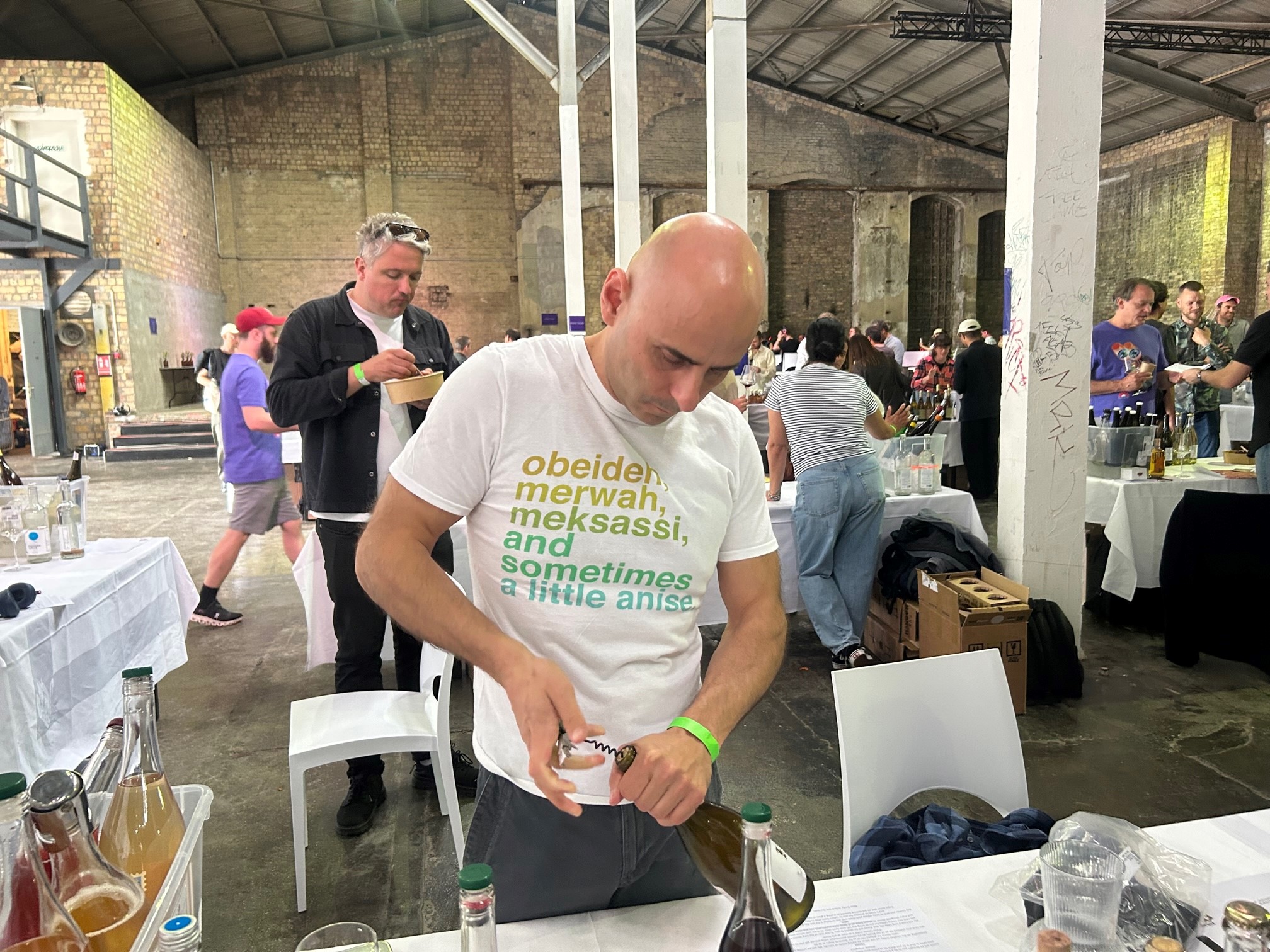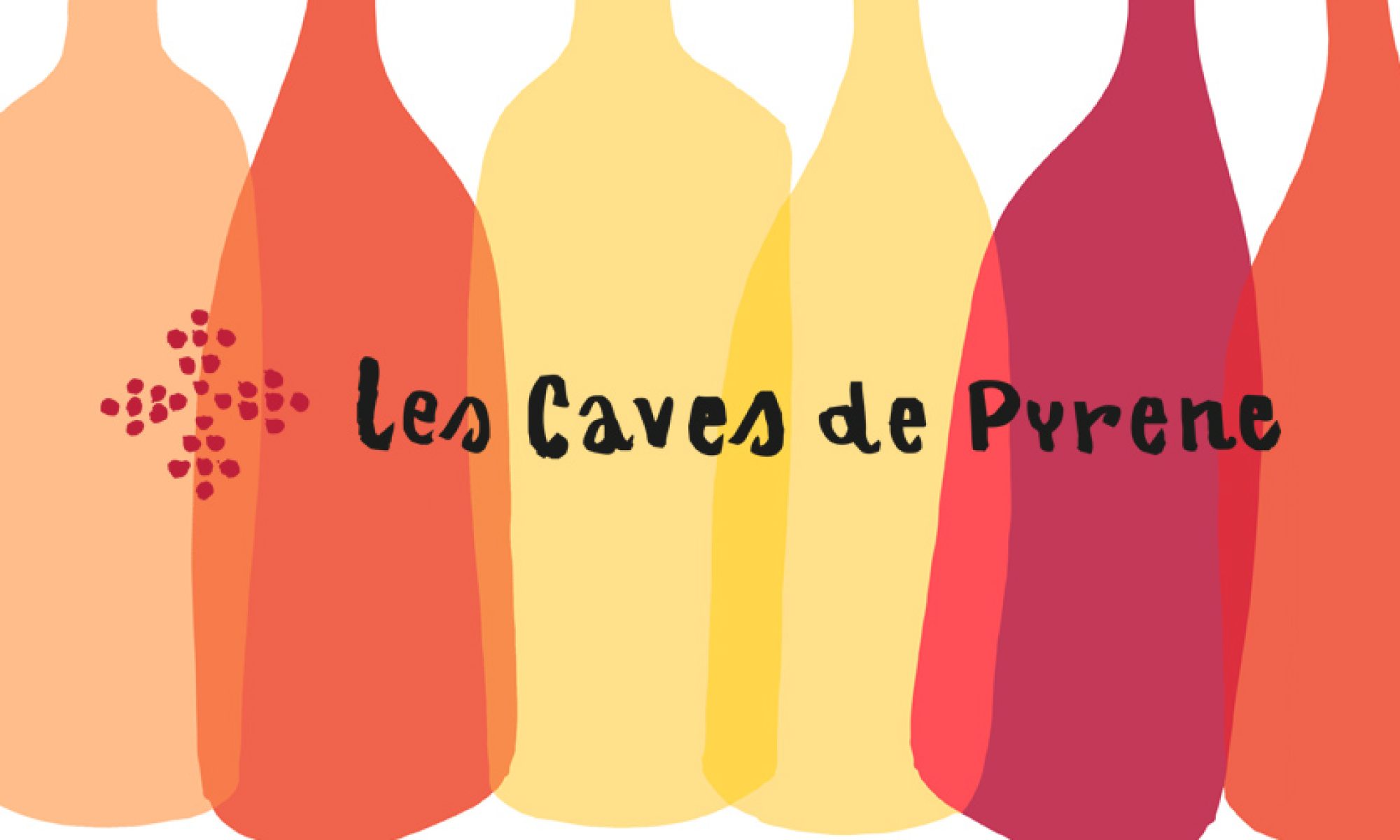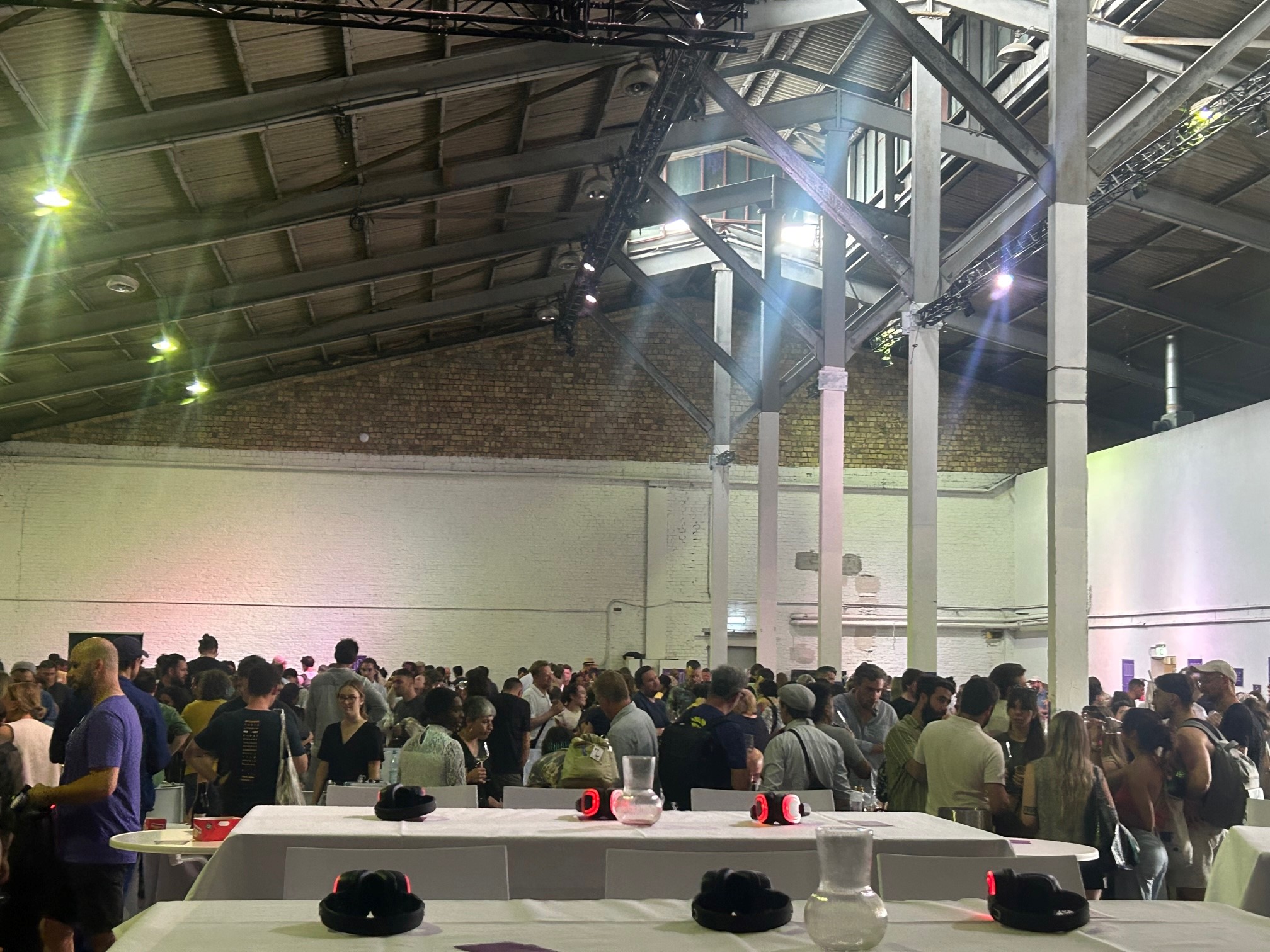Sublime (Natural) Wine in Berlin

My knowledge of Berlin was confined to snippets of Cabaret and its depiction of the decaying Weimar Republic and the Cold War tales of writers such as John Le Carré and Len Deighton for whom the city was always a place of shadows and intrigue.
After a very lengthy wait at passport control (by the efficiency of their airports shall ye judge a whole culture), we emerged on the other side, checked into our somewhat brutalist (in terms of architecture) hotel and sallied forth into the night for some swift refreshment.
After ten minutes’ walk we alighted on a wine bar that on first inspection might not fill one with confidence with its shelves groaning under serried ranks of negociant wines. A friendly welcome put us at ease, and soon we were ensconced at a table with complimentary popcorn. A small gesture, but I loved it. The wine list didn’t hold a great deal of promise, but there is a tiny section devoted to orange wines. When you are not acquainted with the wines or producers on a list, then orange is arguably the safest bet. We choose an unfiltered German Roter Traminer. Wines from the Traminer family are one of my guilty pleasures, I confess to one of my traveling companions, Dr. Jamie Goode. When you are tired, or not in the mood for wine, their obviousness is a virtue. We eat a large plateful of ham and chicken skewers and feel expansive. More popcorn is brought to the table. We have arrived.
When you are not acquainted with the wines or producers on a list, then orange is arguably the safest bet.
The next day we are due to meet with our other colleague, co-host of ‘Just Another Wine Podcast’, and organizer of the Weinfest, Emily Harman, and a small group of producers at a wine shop called Mezzacantina just south of the river. It is a colourful part of town with the locals evidently bringing their full graffiti A-game. Being early, we stroll through the adjacent Goerlitzer Park, and I take a few photos of “interesting” looking local characters. ‘You just took a picture of a guy pissing’, hissed Jamie.
We convene soon after in front of the wine shop where Emily dispenses pet nat after pet nat to all and sundry, photos are taken, we absorb the sights and sounds of the Turkish street festival (kebaba-palooza!) are treated to a buffet lunch of mixed starters followed by some quite delicious stuffed homemade pasta. The wine flows as does the conversation, some beautiful bottles are opened, and voluble enthusiasm is the order of the day.
Jamie and I taxied to our apartment, which initially we were unable to locate then entrance and then when we did I managed to read the German instructions for entry back to front and upside down. I was interpreting the leaving instructions as the entry ones). Eventually, by dint of rattling the door knob and swearing, something gives, and we are inside (without quite knowing how).
‘You just took a picture of a guy pissing’, hissed Jamie.
That evening we joined Les Caves de Pyrene’s own Paul and Michelle at a swanky wine bar called Anima, snagged a prized balcony table overlooking the River Spree and drank in the sunset. We ordered almost everything on the snacky menu (what, no popcorn?) and dive into the small but serviceable list, starting with an orange from Heinrich, which seems to have monopolised the fridge space in Berlin’s wine bars. After dinner, we walk to Holzmarkt to suck in some beery Berlin atmosphere.
The next day is the Sublime Wine Fair, aka Berlin Weinfest, located in an industrial building called Napoleon Complex. We enter past various food stalls and a stacked sound stage into the arena where nearly 80 producers are opening bottles and chilling their wines. A large stage flanks one side of the seating area for the masterclasses.
Although I was not present in a buying capacity, it is always educational to nose around and evaluate what’s going on amongst the natural wine community. The standard was high, and the range of wines and growers present illustrated how diverse the natural wine scene is, not only in Berlin but throughout the world of wine.
Various seminars took place throughout the afternoon, and we participated in a couple. Jamie and I were the panel for one called “Can you taste the soils?” I feel the more one delves into the subject of terroir, the less likely one is to reach a definitive conclusion. We feel that terroir exists, but can we prove other than on the pulses (and in our mouths). Undoubtedly, the soils are very particular, and each vineyard possesses a distinctive character that influences the final. Undoubtedly, the quality of the farming and the varied winemaking choices may help or hinder the expression of “terroir-ness” in the wines. And undoubtedly also, tasting terroir is very much to do with an individual’s perception of flavours. The question is that if you can discern by tasting different soil types via the impression of minerality, it would seem to suggest that the grapes, through the mechanism of the vines, take on board a portion of the character of their surroundings.
To work with amazing material and to butcher it would be profoundly disappointing, just as if a chef were to badly overcook the finest piece of meat or fish.
Paul, the panel’s moderator, posed a question that I have never really given much thought to. “Is it better to have a wine from a great terroir that is not so well made, or a wine from a mediocre terroir that is beautifully made.” It is not a clear choice, because you need to taste every single wine or its merits to feel whether a terroir character is prominent or lacking. And tastes differ. Whilst the quality of farming is paramount so are the winemaking methods. Nothing can come of nothing, as the saying goes, and if the selected grapes don’t have the material within them, then the resultant wines won’t be interesting – even if the winemaking is as expressive as it can be. If the wine is not tricked up, then at least it is an honest attempt to capture something of the vintage and the origin. On the other hand, to work with amazing material and to butcher it would be profoundly disappointing, just as if a chef were to badly overcook the finest piece of meat or fish. In the end, terroir is a nuanced and complex issue, but then interesting wines are complex and nuanced drinks.
Loosely titled “The Rise & Rise of Natural Wine”, the second talk, in which Emily joined Jamie and me, was intended to be part of our podcast series (Just Another Wine Podcast). The subject matter was an invitation to dig into the history of natural wines before natural was a term to describe them, to understand why chemical/conventional farming and winemaking became the norm, and to trace its modern incarnation by marking certain growers, regions and wine fairs, Finally, to take the pulse of the natural wine phenomenon at the present moment. It is easy to oversimplify and to describe events as a cultural (or even countercultural) movement. When you are at an artisan wine fair and you can cut the palpable buzz with a knife, you witness the interactions between the public and the producers themselves, and you taste the energy in these wines made with no chemical inputs, you are reassured that natural wine – however one chooses to describe it – has been a positive shot in the arm for the wine industry, and has attracted a new generation of drinkers who are concerned with provenance and what goes into their wines.

The Berlin Weinfest 2025 had a lovely dynamic. The right number of growers and enough variety within those growers and their wines. Friendly helpful organisers. Thanks to Emily Harman, her colleagues and the team who made it happen.


